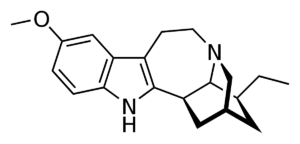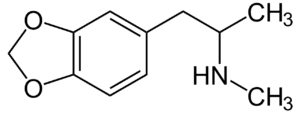Psychedelics in Medicine: A Western Categorization
Chapter 3: What are Psychedelics?
Psychedelics 101 Series
Understanding the Fundamentals of Psychedelics
Estimated reading time: 3 mins
April 19, 2023
Table of Contents
In the previous article “Naming Psychedelics: How it Affects Perception and Experience”, we explored why are psychedelics called psychedelics and how the way we understand these substances forms the context and influences the experience. This article goes into the categorization of psychedelics in Western medicine. Ready for pharmacology?
How are psychedelics categorized in the Western medical perspective?
In Western medicine, researchers have categorized psychedelic substances into different classes for practical purposes in clinical research. These are based on two distinguishing and related factors.
The first is the way in which they interact with the brain, more specifically, to which receptors the substance binds. Second, the subjective effects they induce. Understanding how these interactions in the brain relate to the subjective effects keeps cutting-edge neuroscientists awake at night.
Classic Serotonergic Psychedelics
In Western medicine, the most prominent category is one of classic serotonergic psychedelics [1]. These are the most well-known and well-studied psychedelic substances. Their safety and efficacy are backed up by a substantial body of research. Their common characteristic is that they interact with the neurotransmitter serotonin which is naturally present in the brain. Chemically, some of these compounds are very similar to serotonin. More specifically, they interact with the 5-HT2A receptors in the brain (5-HT, i.e. 5-hydroxytryptamine, is the chemical name of serotonin while 2A is a serotonin receptor subtype). Therefore these substances are considered to induce similar effects. Included in this category are the psychedelic compounds psilocybin which can be found in some mushrooms, N, N-dimethyltryptamine (DMT), ayahuasca, mescaline, and LSD. These (except for mescaline) are also referred to as tryptamines.
The potential of the classic serotonergic psychedelics to treat mental health conditions and help individuals on their path of psycho-spiritual development, is often attributed to the dissolution of the boundaries of the self or a “mystical-type” experience [2]. We will explore both in depth later in Chapter 2.

Dissociative Psychedelics
Another category of psychedelic compounds can be described as “dissociatives”, which are known to induce states of dissociation from the mind and body, leading to feelings of detachment and alteration of visual perceptions. Examples are ketamine, ibogaine and phencyclidine (PCP).



Entactogens
A third category are the entactogens, which are substances that produce feelings of euphoria, empathy and emotional openness. In this category, 3,4-methylenedioxymethamphetamine (MDMA) is the most relevant in the field of psychedelic-assisted therapy. A body of research shows MDMA’s therapeutic benefits in combination with psychotherapy to treat PTSD [3]. However, it is debated whether the substance should belong to the category of classic psychedelics because of the difference in subjective effects.

Rick Doblin, the founder of pioneering non-profit research organization, MAPS, provides an insightful perspective to that debate:
“MDMA’s potential for healing PTSD-patients differs from the ‘classic’ psychedelics, which usually need a mystical experience or something similar to ego-dissolution in order to show similar results as MDMA. With MDMA, patients feel a sense of safety approaching their trauma ‘with their ego intact’.” [4]
In conclusion, psychedelics in Western medicine have been categorized into different classes based on their interaction with the brain and the subjective effects they induce. The most prominent category includes classic serotonergic psychedelics such as psilocybin, DMT, ayahuasca, mescaline, and LSD. Other categories include dissociatives and entactogens, with MDMA being a notable example in the latter group.
How do psychedelics differ from cannabis & “hard drugs”?
Now you are ready to redefine the spectrum of substances. The next article does exactly that by showcasing how psychedelics, cannabis & “hard drugs” are clearly of different categories.
Images
Uncited images were created by Nino Galvez using AI image generators
References:
[1] Araújo, A. M., Carvalho , F., Bastos , M. L., Guedes de Pinho, P., & Carvalho, M. (n.d.). The hallucinogenic world of tryptamines: An updated review. Archives of toxicology. Retrieved April 11, 2023, from this site
[2] YouTube. (2020). Rick Doblin & Dr. Torsten Passie: The Future of MDMA-assisted psychotherapy. Retrieved April 11, 2023, from this site.
[3] Smith, K. W., White, C. M., Hernandez, A. V., & Sicignano, D. J. (n.d.). MDMA-Assisted Psychotherapy for Treatment of Posttraumatic Stress Disorder: A Systematic Review With Meta-Analysis. Retrieved April 11, 2023, from this site
[4] YouTube. (2020). Rick Doblin & Dr. Torsten Passie: The Future of MDMA-assisted psychotherapy. Retrieved April 11, 2023, from this site.
Subscribe to the insights newsletter
At most, once every 2 weeks.


